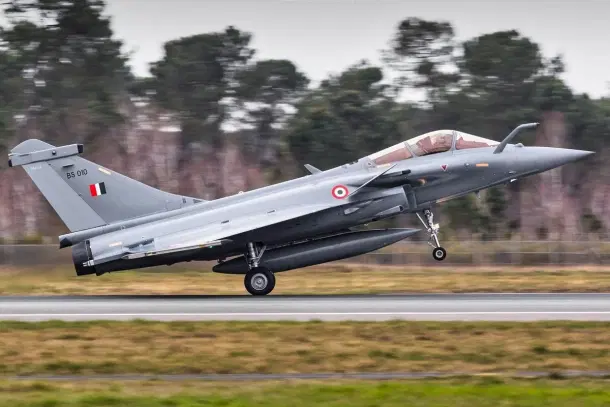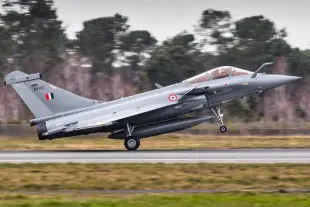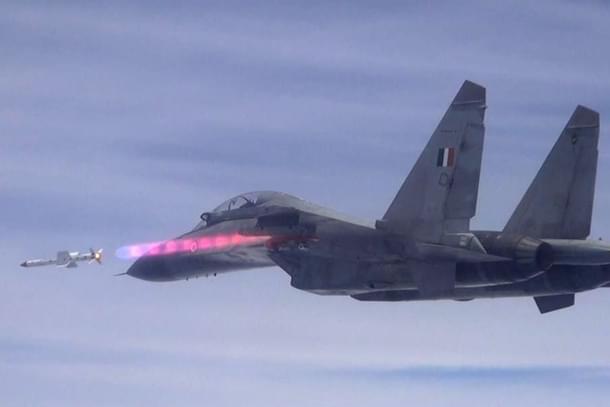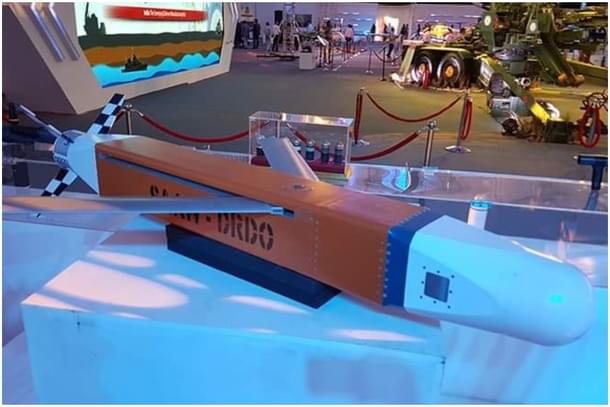Defence
Rafale Jets To Soon Sport India-Made Astra Missiles And SAAW Glide Bombs, As IAF Asks Dassault To Integrate Indigenous Weapons
Ujjwal Shrotryia
Jul 24, 2023, 11:22 AM | Updated 11:22 AM IST
Save & read from anywhere!
Bookmark stories for easy access on any device or the Swarajya app.


In a significant move towards bolstering India's defense capabilities, the Indian Air Force (IAF) has requested French aerospace company Dassault Aviation to integrate indigenous weapons, including the 'Astra' air-to-air missile, onto its Rafale combat aircraft.
According to defense officials, the IAF aims to equip the Rafale with indigenous weapons developed by the Defense Research and Development Organisation (DRDO), such as the Smart Anti Airfield Weapon (SAAW) and the Astra missile.
Additionally, the IAF plans to integrate various indigenously designed weapons from private sector firms into the aircraft in the near future.
It is worth noting that last year (in october 2022) Bharat Dynamics Limited has signed a memorandum of understanding (MoU) with Dassault Aviation to integrate indigenous weapons like Astra missile and SAAW glide bombs on Rafale's, as well.

Industry sources suggest that the integration of Indian weapon systems into the Rafale could open up a substantial global market for these indigenous solutions, given their capabilities and competitive pricing.
Notably, the Indian weapon systems are already integrated into the Su-30 MKI combat aircraft and the indigenously developed Light Combat Aircraft (LCA) Tejas.
With India currently operating 36 Rafale fighter jets and expressing intent to acquire 26 Rafale marine aircraft for its Navy, the IAF's pursuit of indigenous solutions aims to enhance self-reliance and strengthen the country's war-fighting capabilities, particularly during times of conflict.
Moreover, the ongoing standoff with China has prompted the IAF to focus on indigenization efforts for various weapon systems.
The Astra air-to-air missile, with its current range of 100 kilometre, is set to receive upgrades in the form of the Astra Mark 2, extending its range to 160 kilometre, and further improvements are planned to achieve a strike range of 300 kilometre.

Similarly, the Smart Anti Airfield Weapon (SAAW) can hit targets at ranges beyond 100 kilometre, with advanced versions under development.
With private sector companies also contributing to the development of long-range missiles and bombs, the integration of these advanced systems onto the Rafale enhances India's defense capabilities, showcasing the nation's commitment to self-reliance and strengthening its position in the global defense market.
The Rafale, widely used by several countries, including India, France, Egypt, and Qatar, has attracted global interest, with countries like Greece, Croatia, UAE, and Indonesia placing orders for these advanced planes.
Staff Writer at Swarajya. Writes on Indian Military and Defence.





